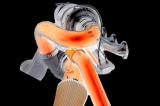- Replies 39
- Views 8.3k
- Created
- Last Reply
Top Posters In This Topic
-
 JOHNFAK 9 posts
JOHNFAK 9 posts -
 98whitelightnin 9 posts
98whitelightnin 9 posts -
 Mopar1973Man 8 posts
Mopar1973Man 8 posts -
 dripley 4 posts
dripley 4 posts


Well gang...
Mopar1973Man is down... I had a air system failure yesterday about Council, ID climbing the grade and passing a RV and heard. BOOM! Psssst.... As I let off the throttle the noise stopped. Get back into the throttle and boost might climb to 5-8 PSI, pyro going like a rocket, lots of black smoke and the noise returns... I stopped in New Meadows, ID for a moment to look and can't see the leak... so I stopped at the hardware store to pickup the stuff to build a boost tester. So I'll be fixing 2 leaks now A/C and boost...